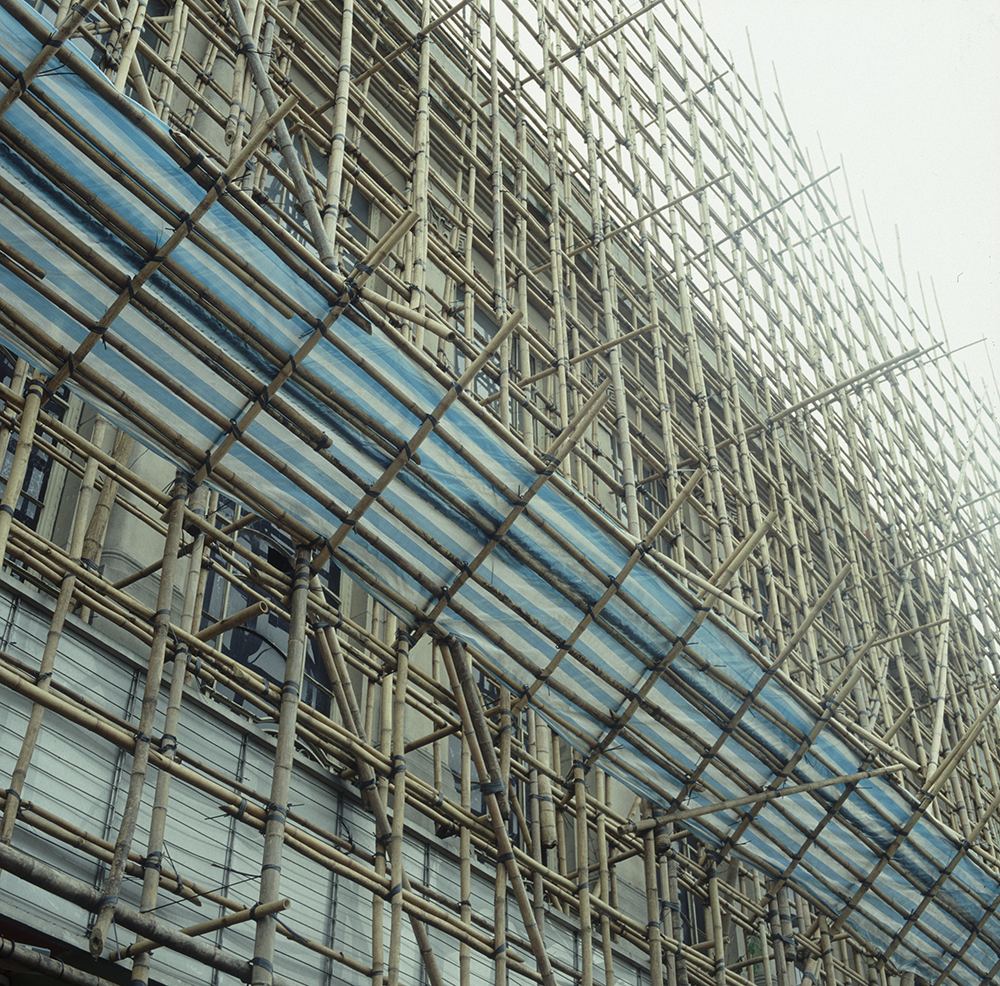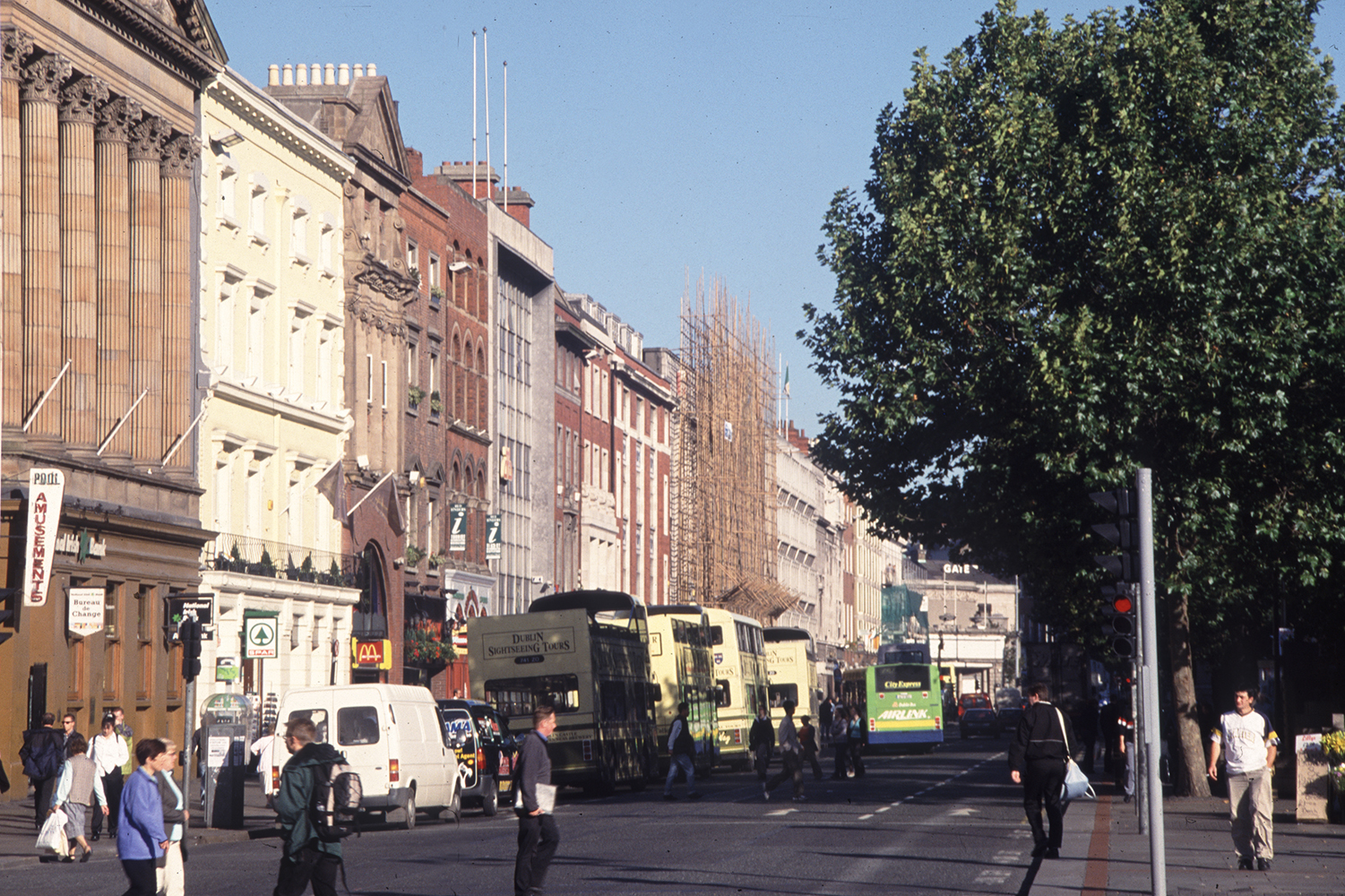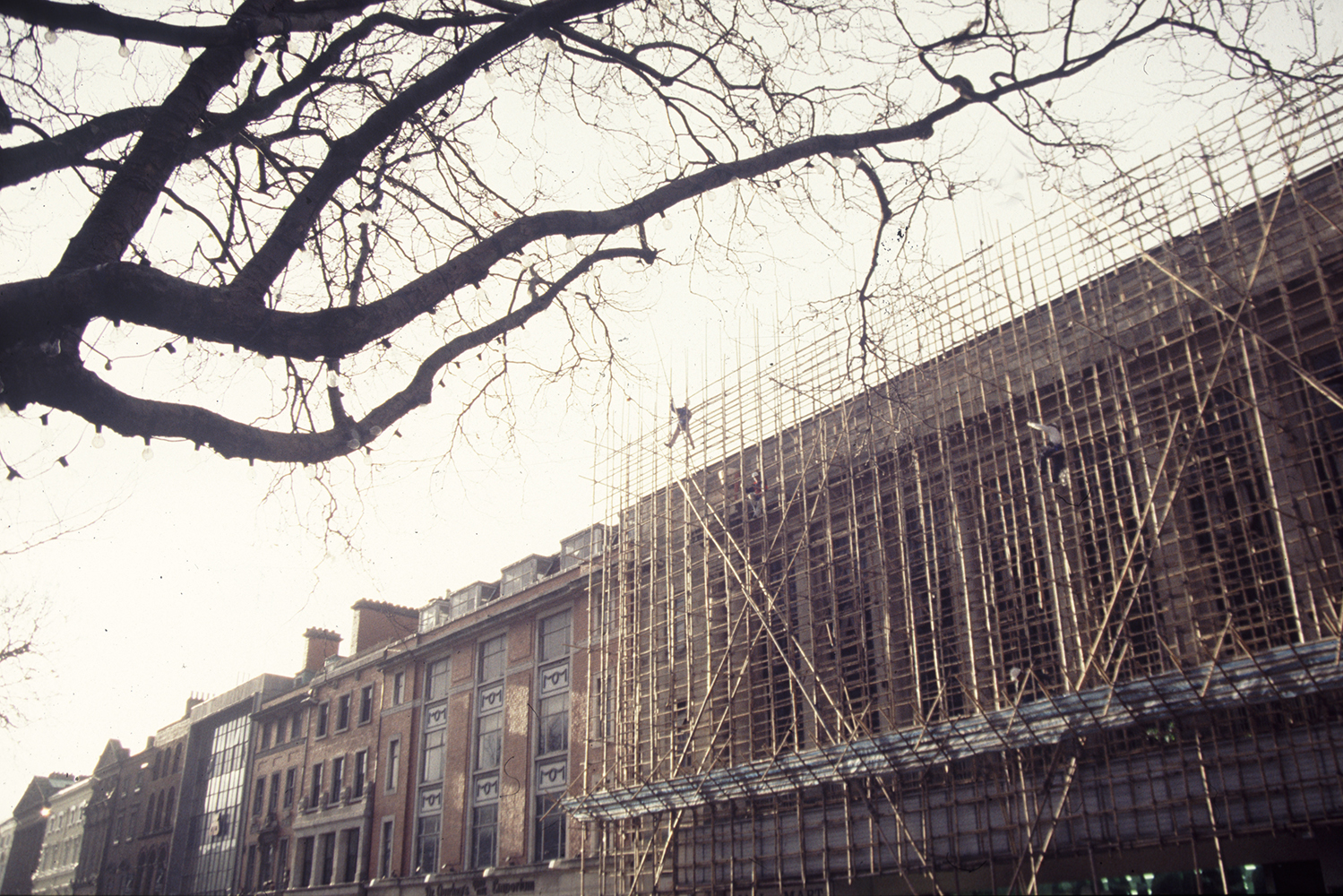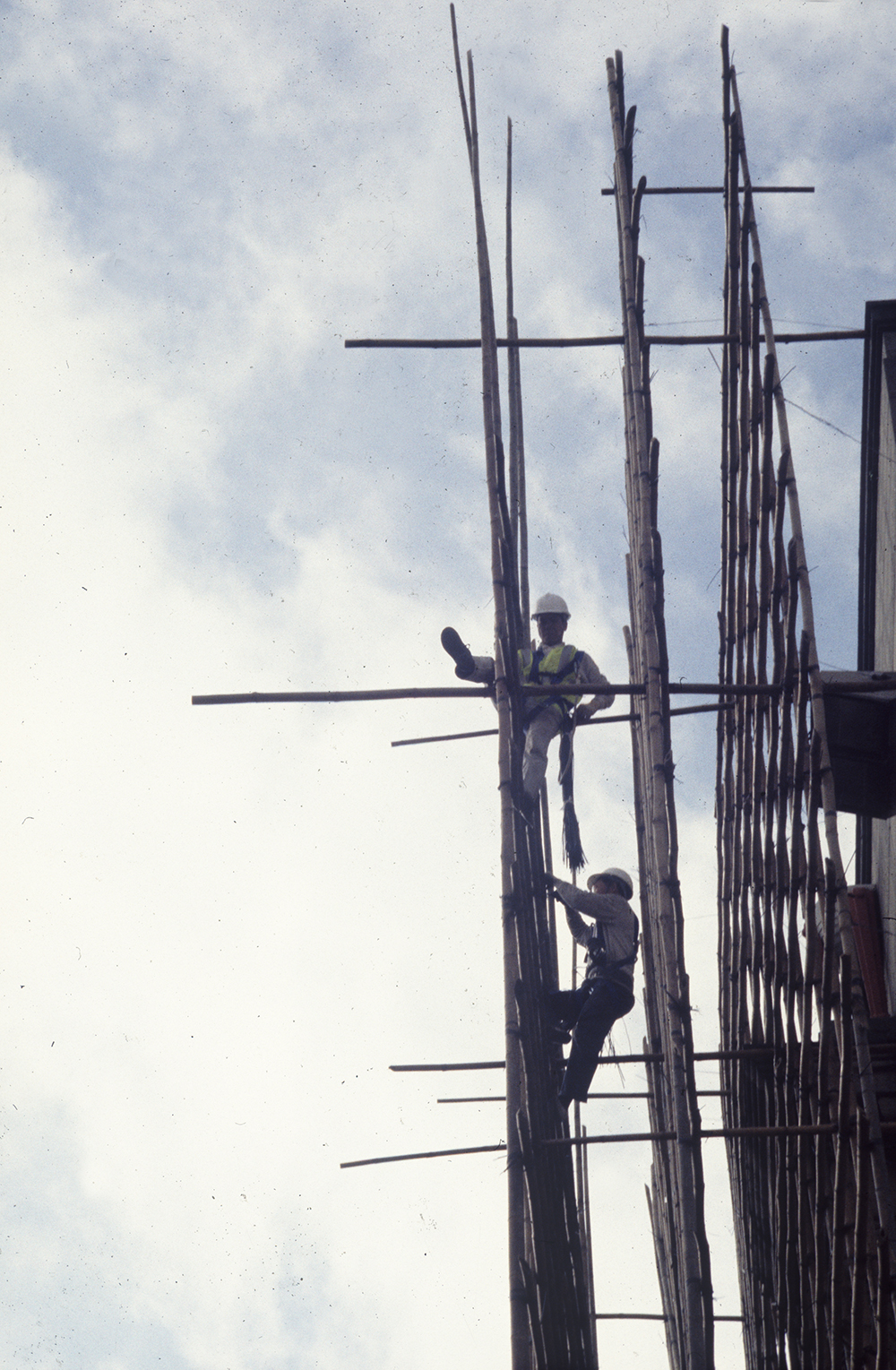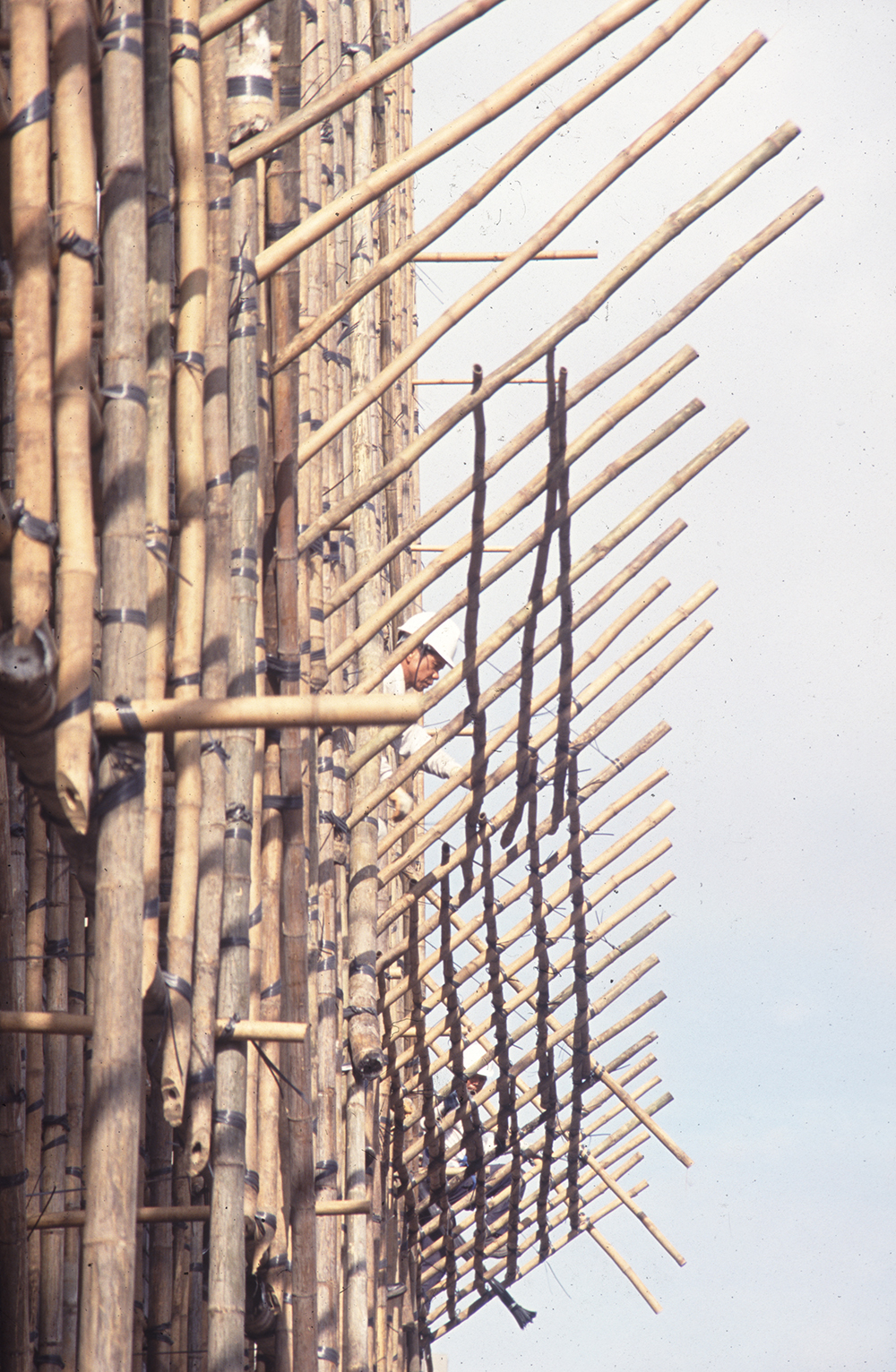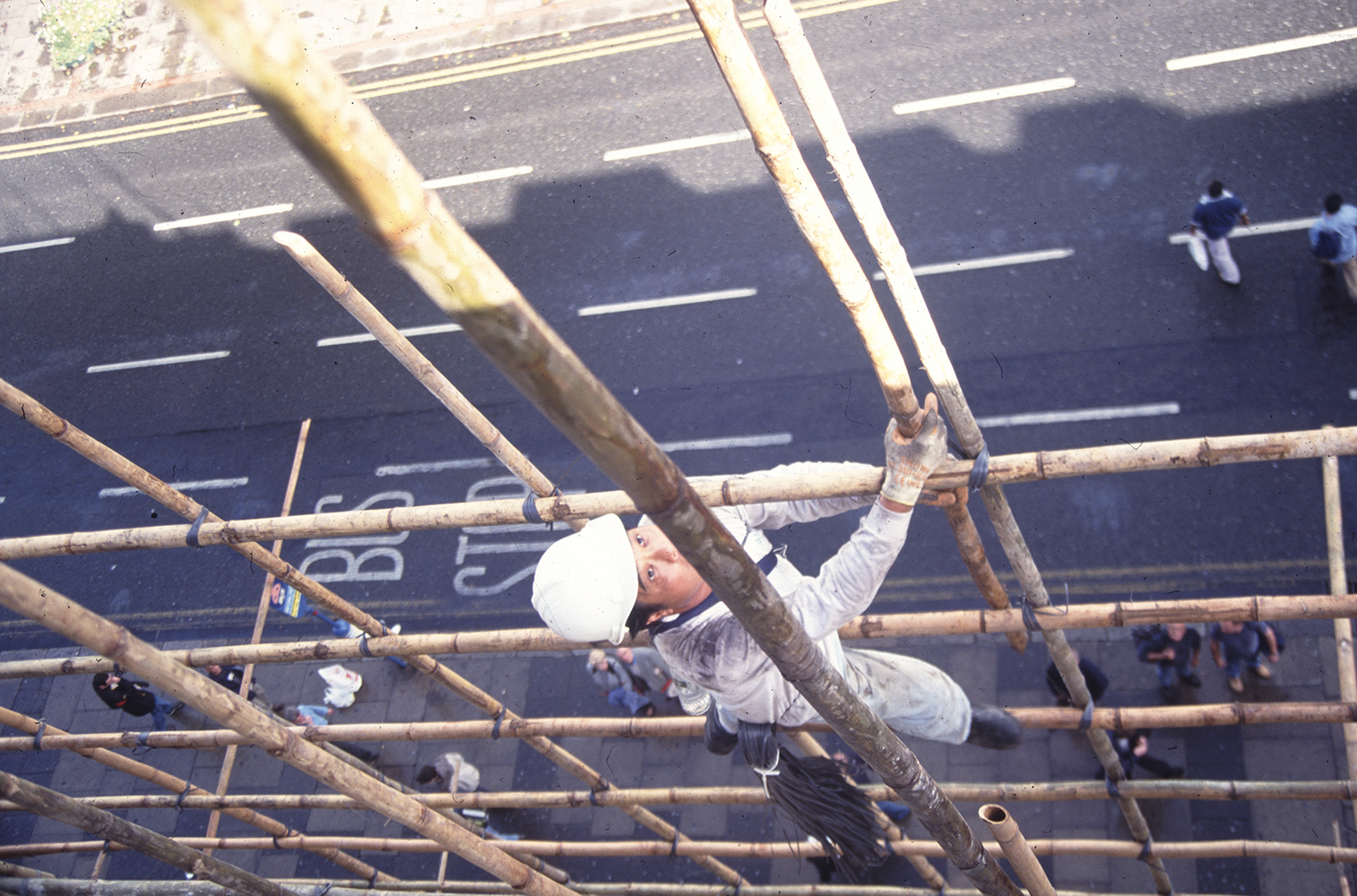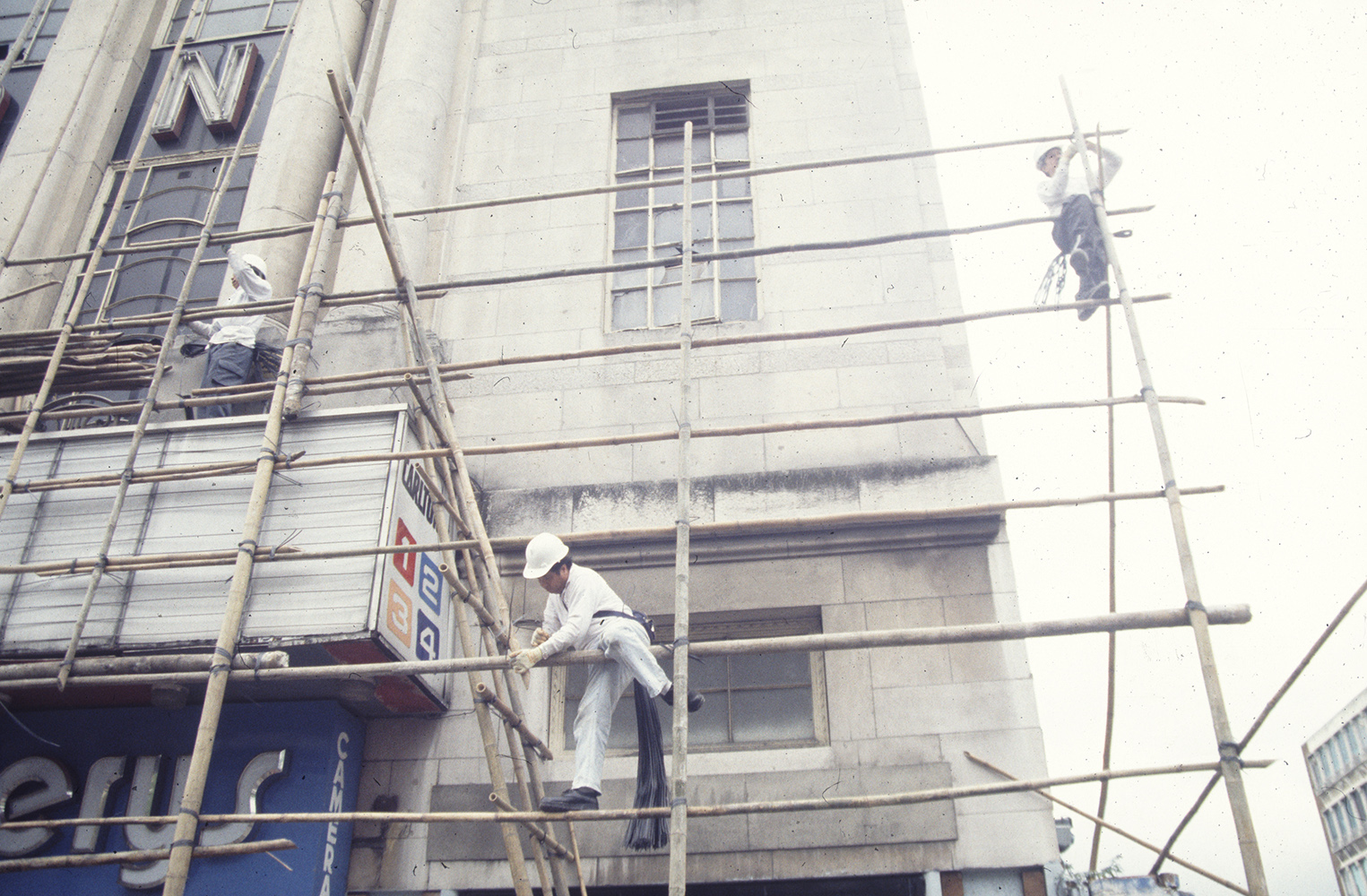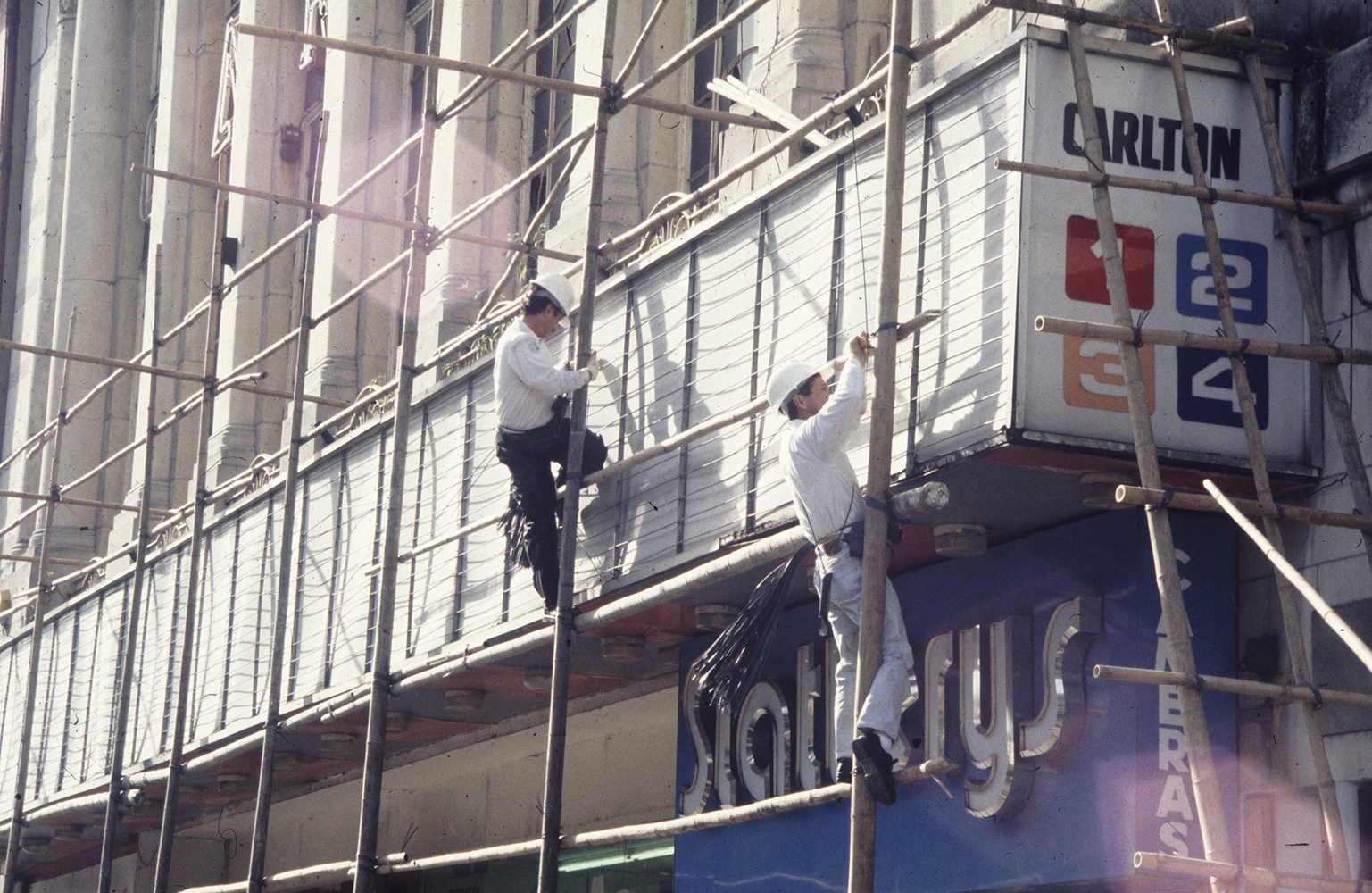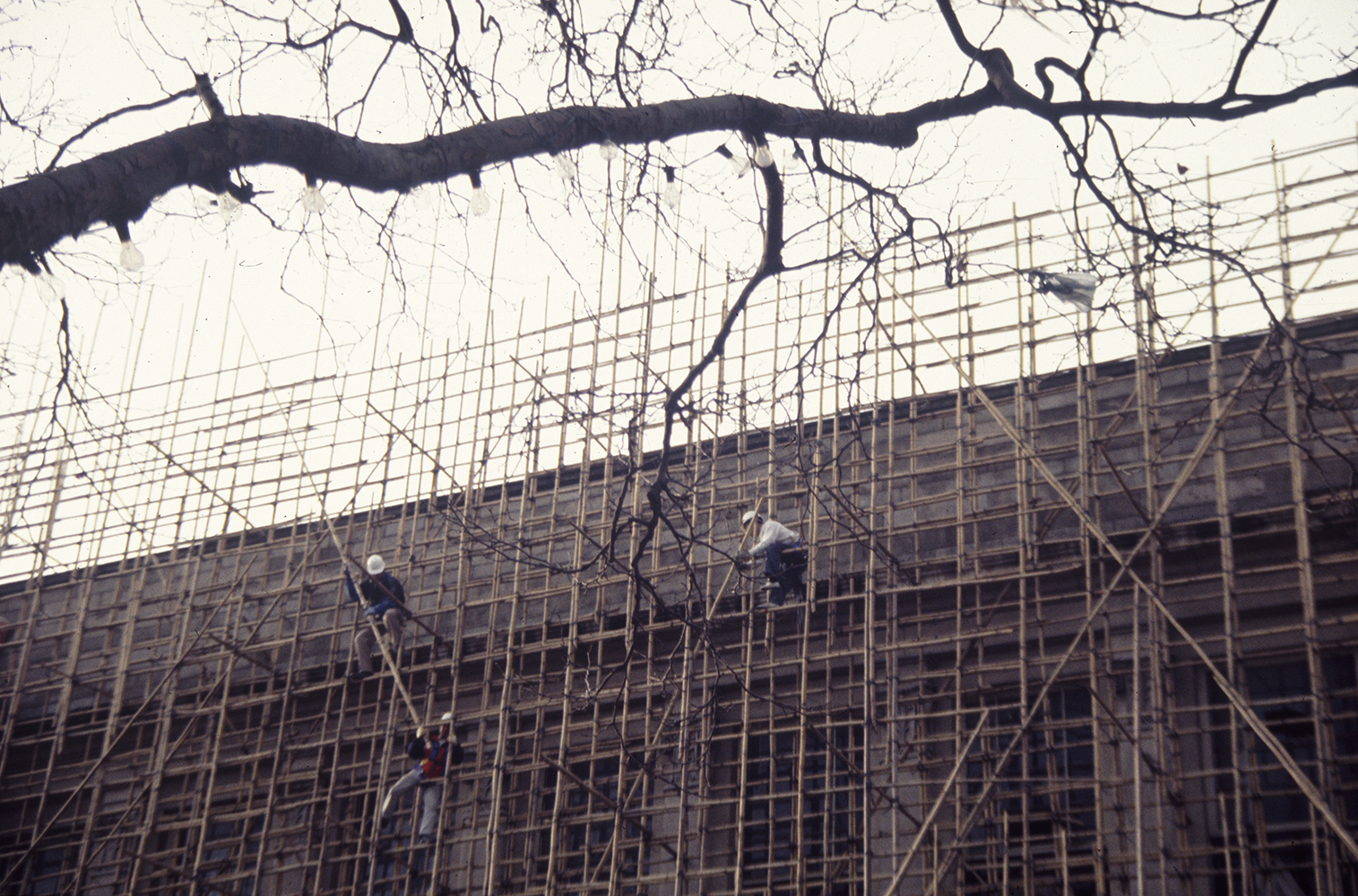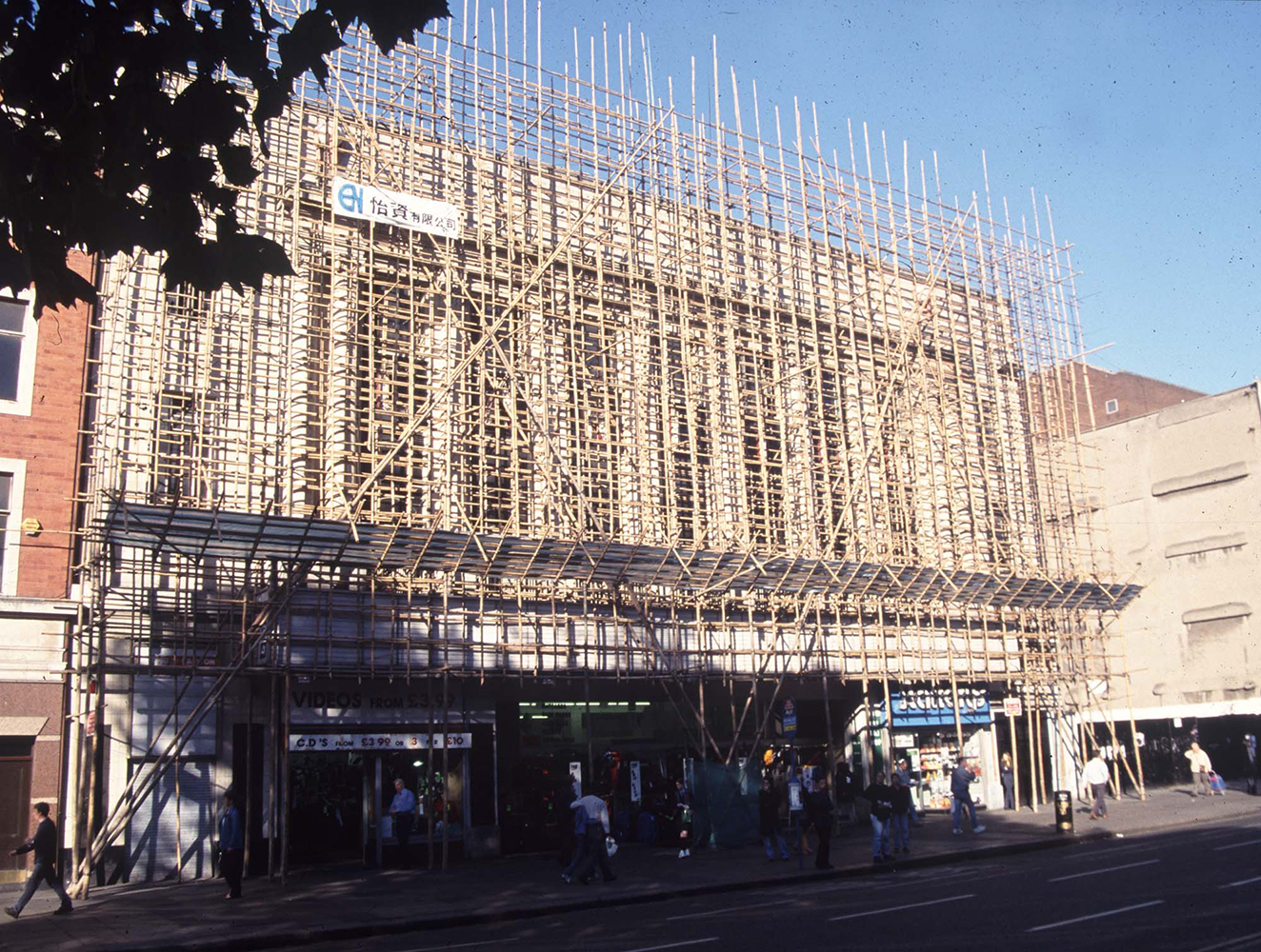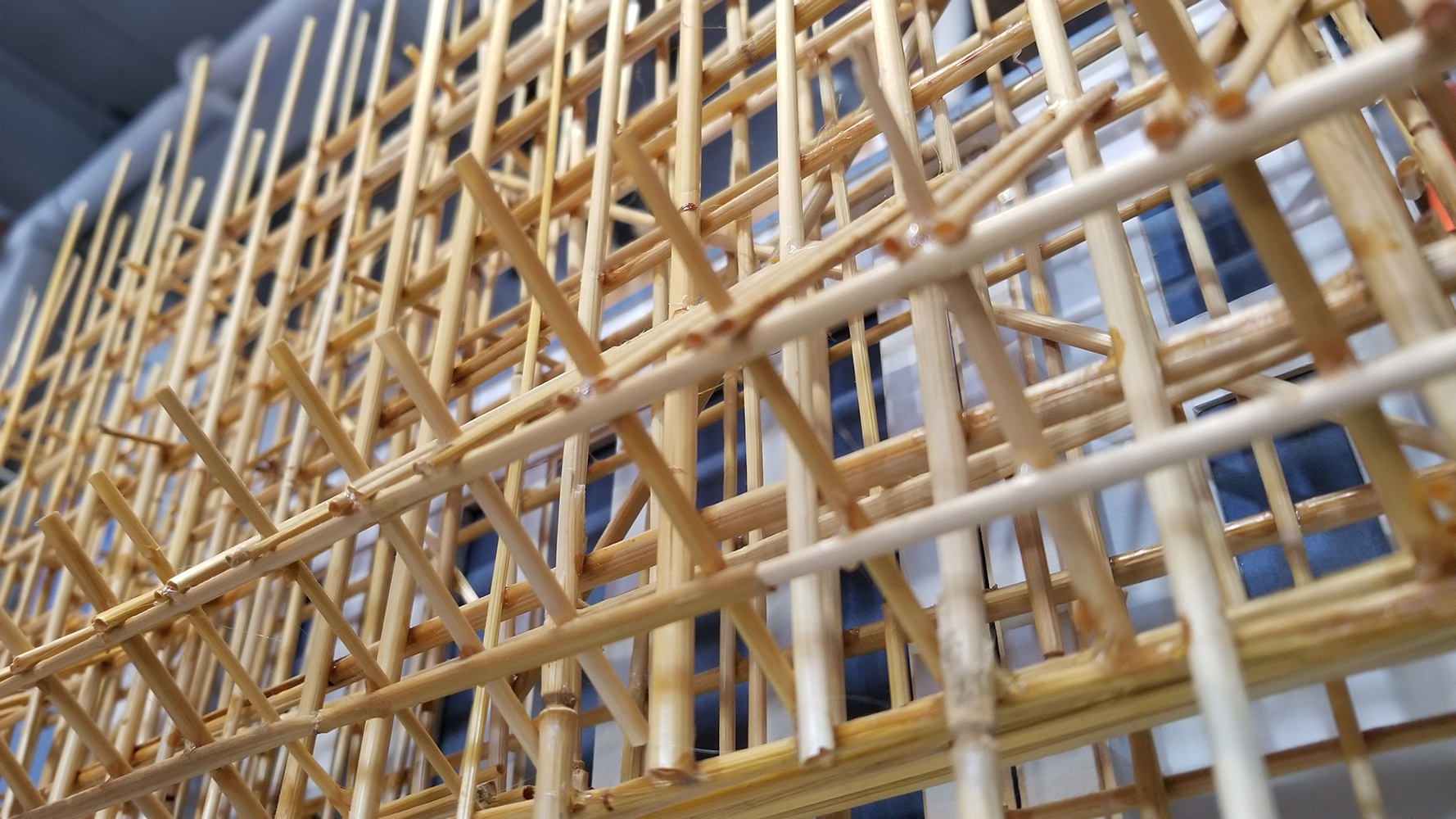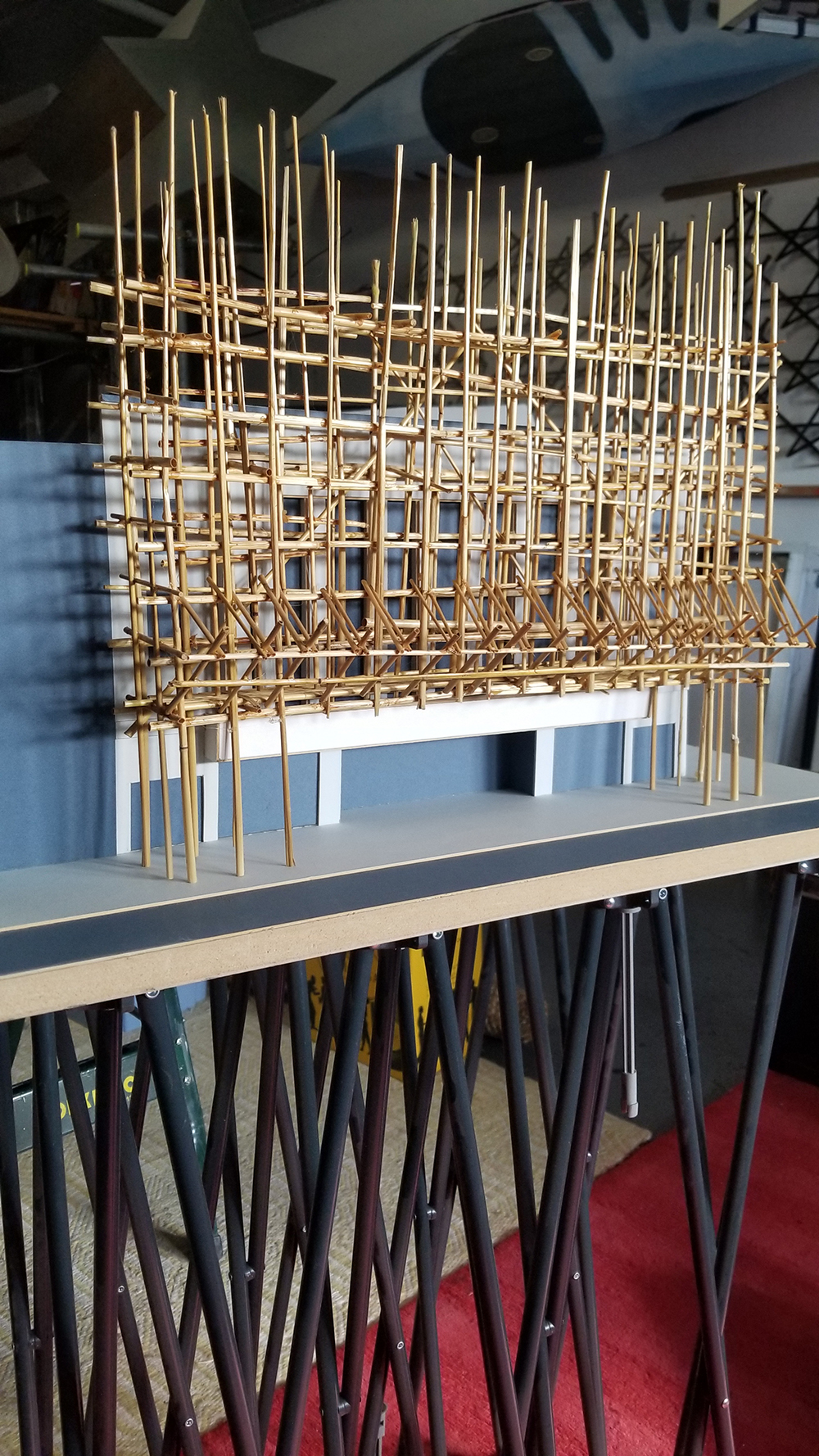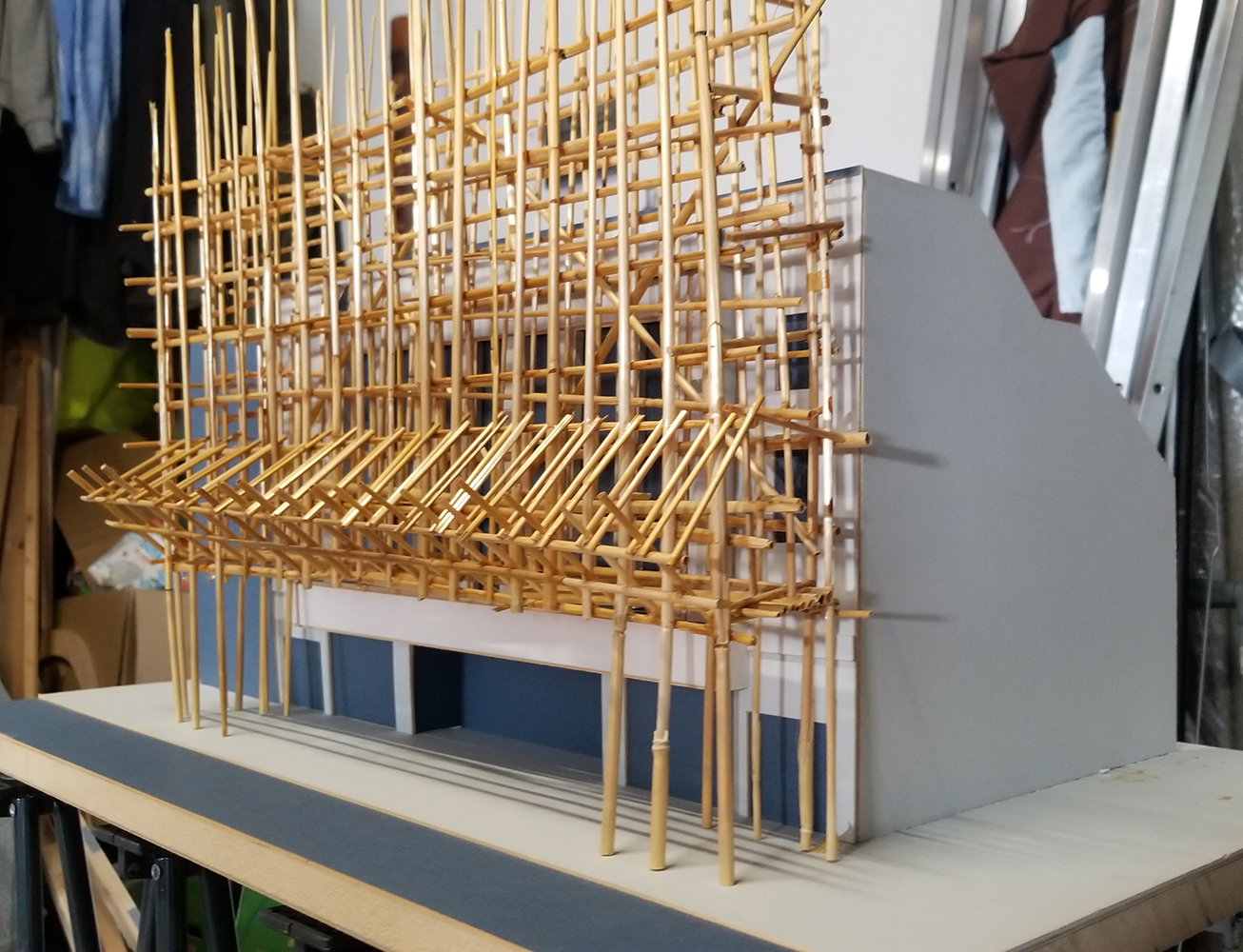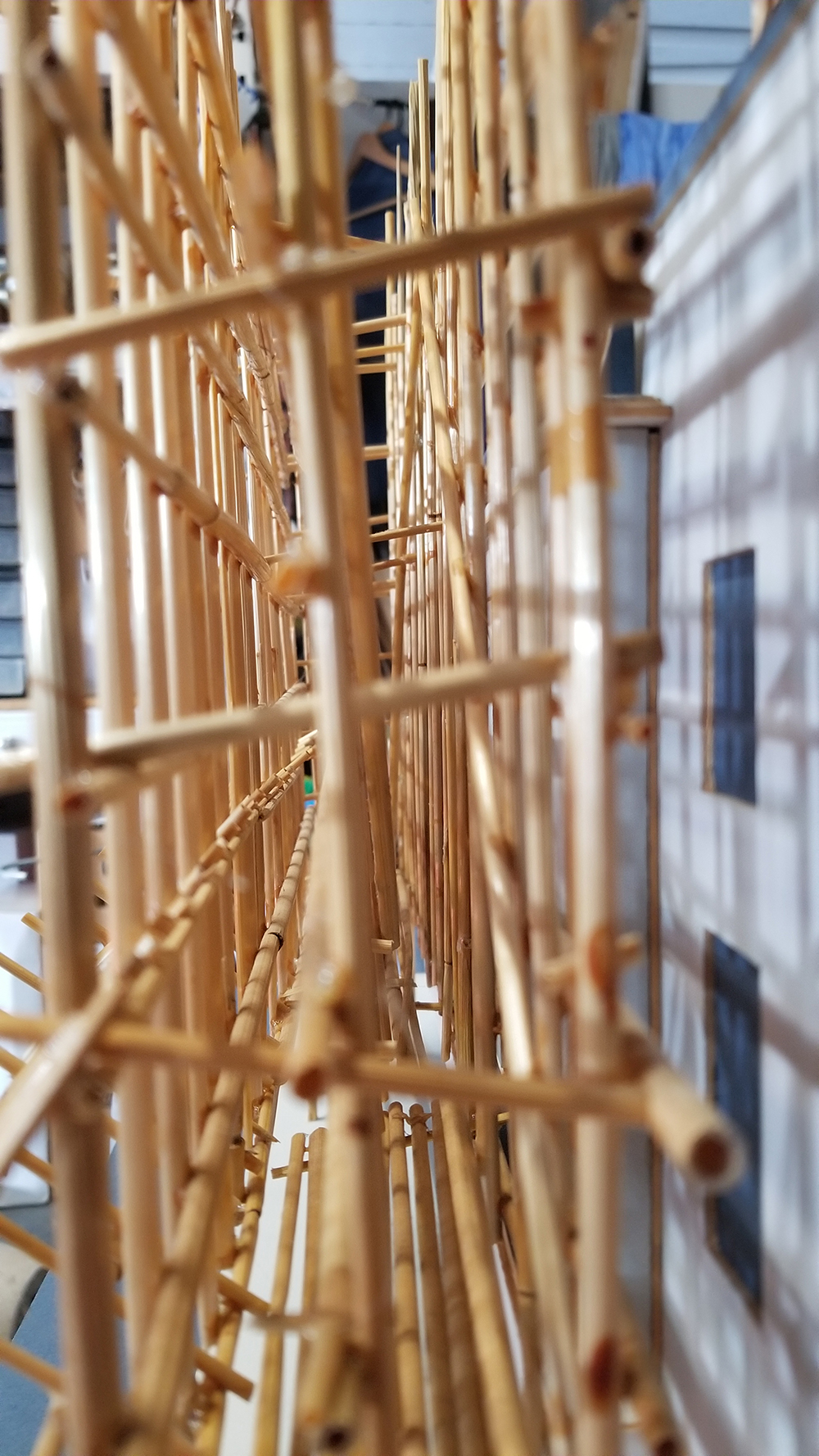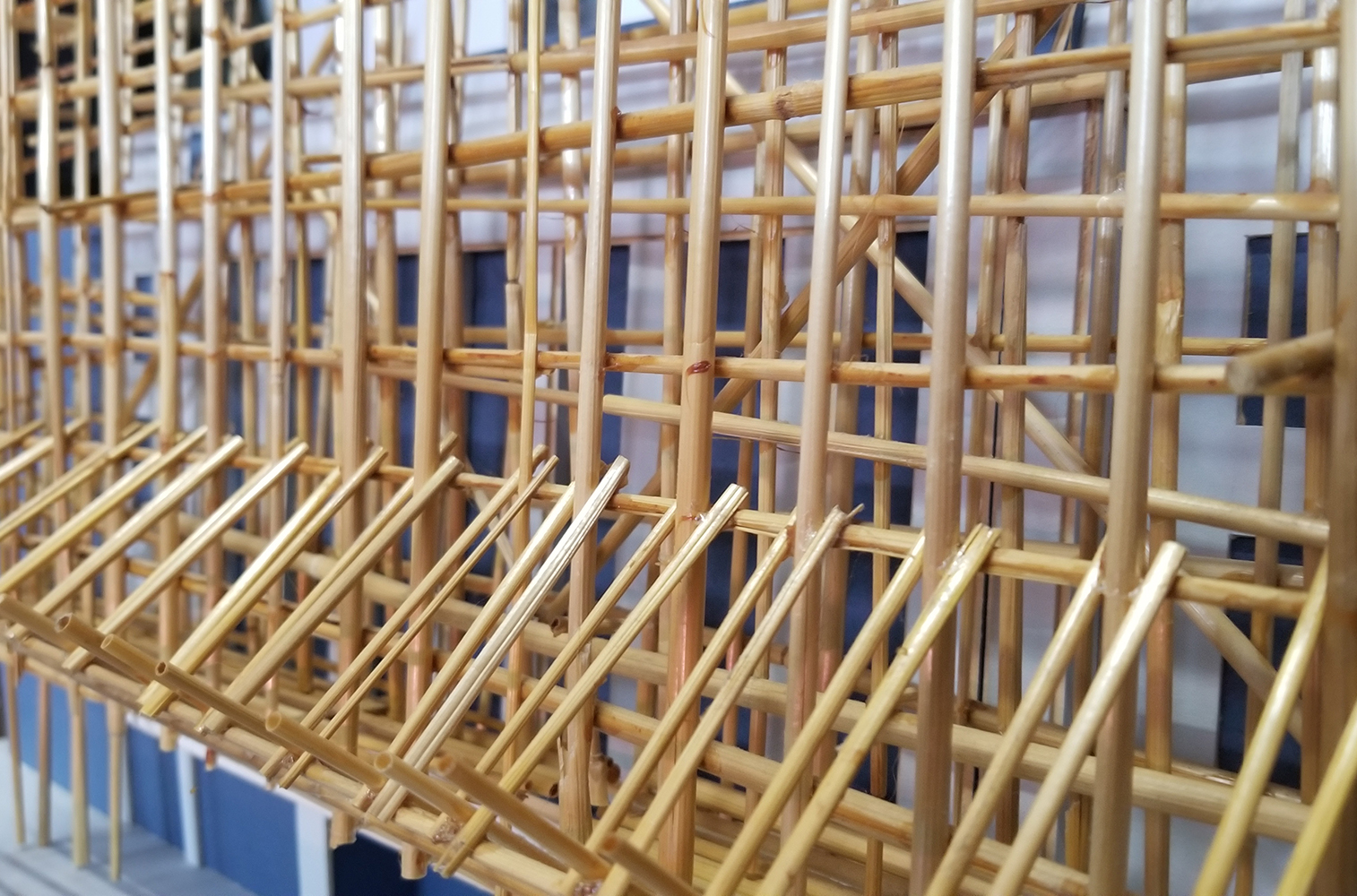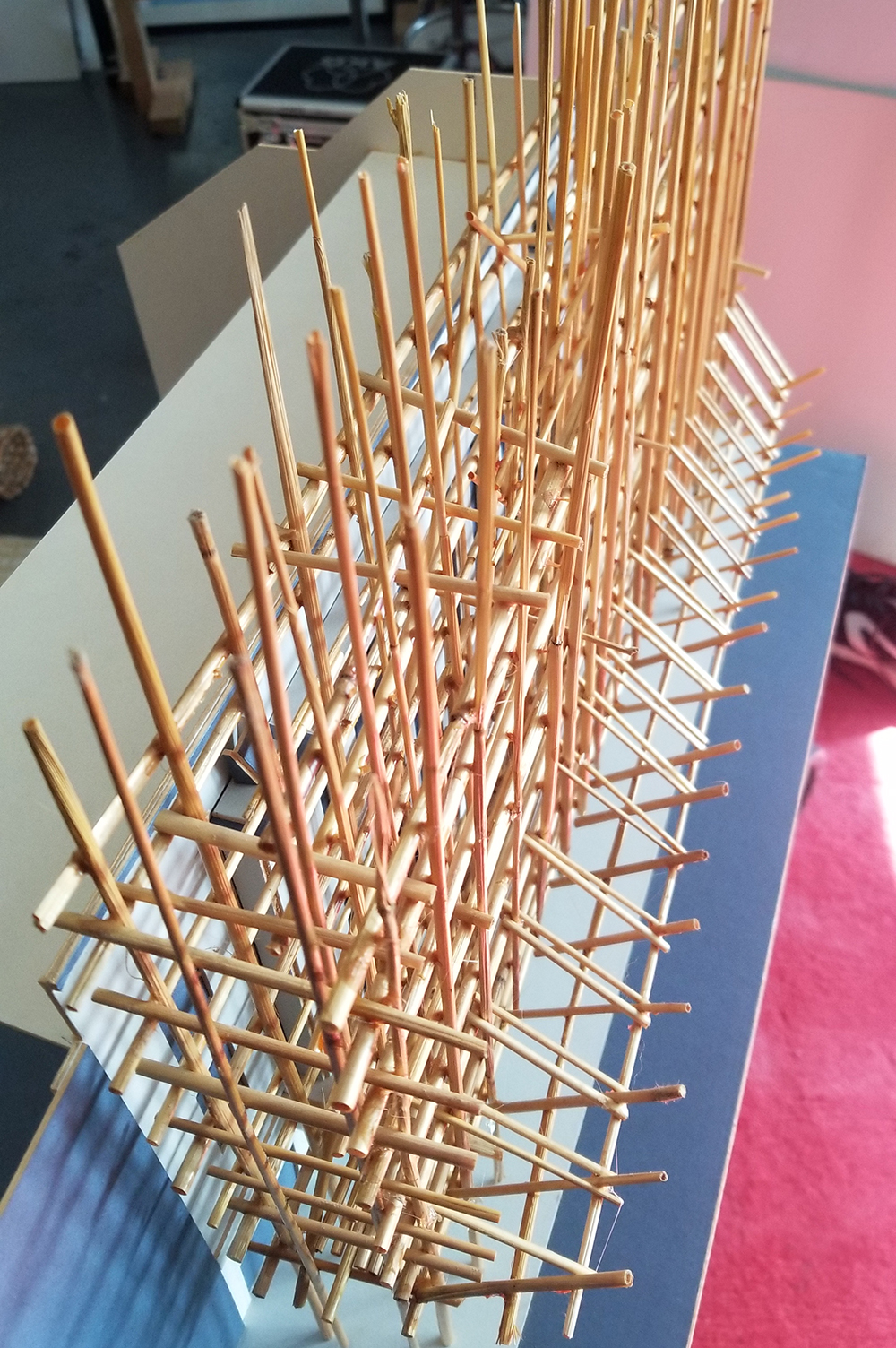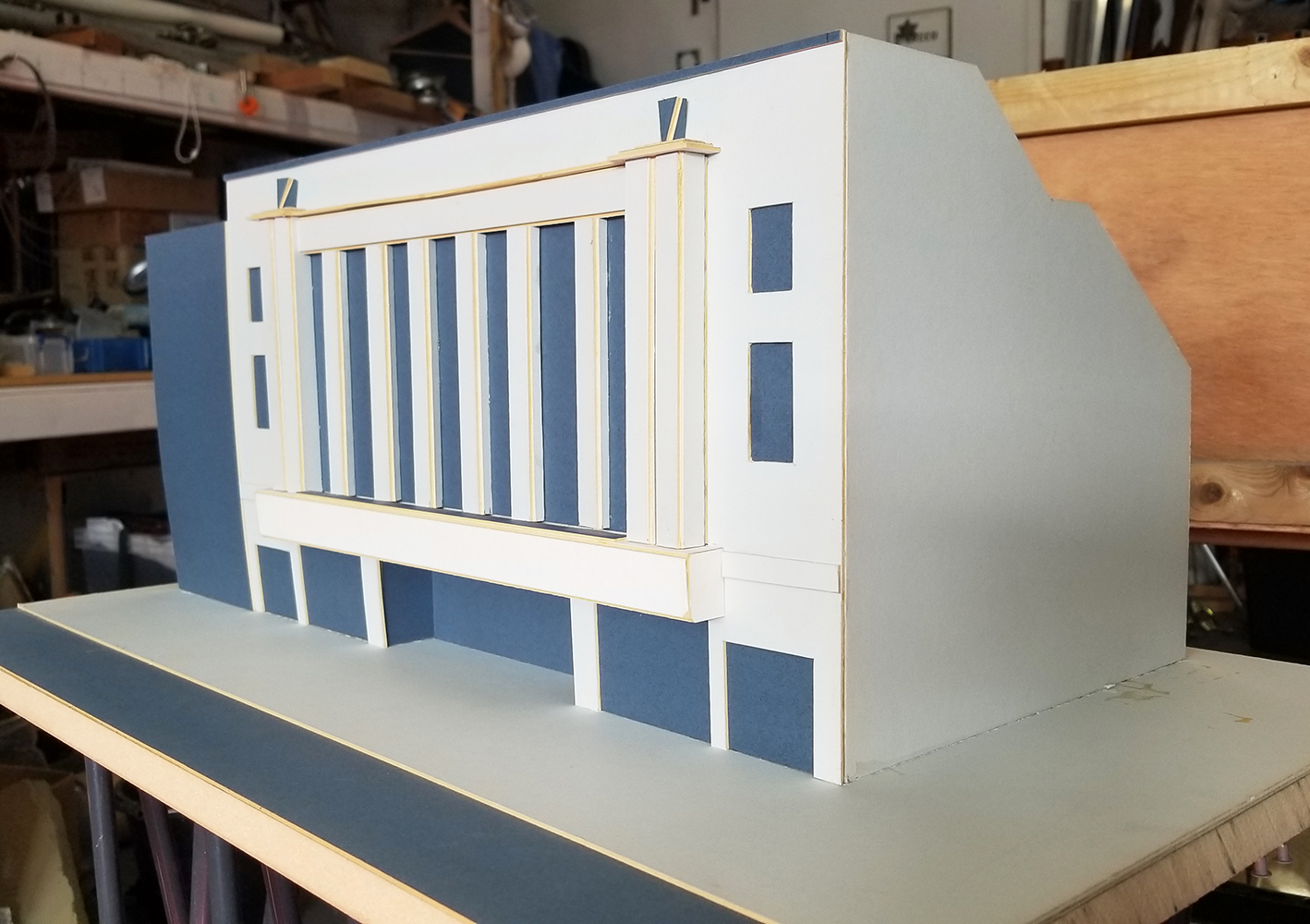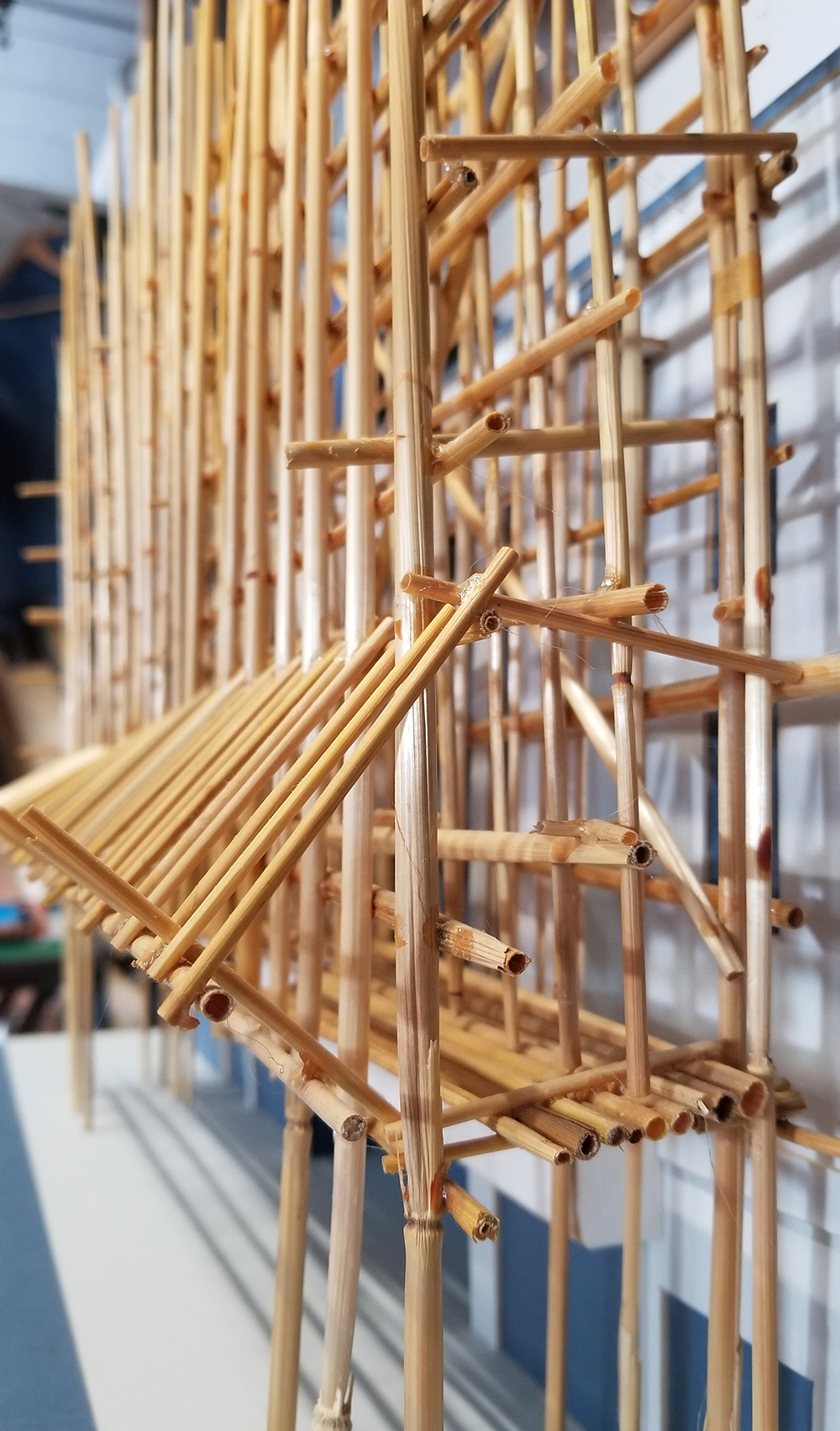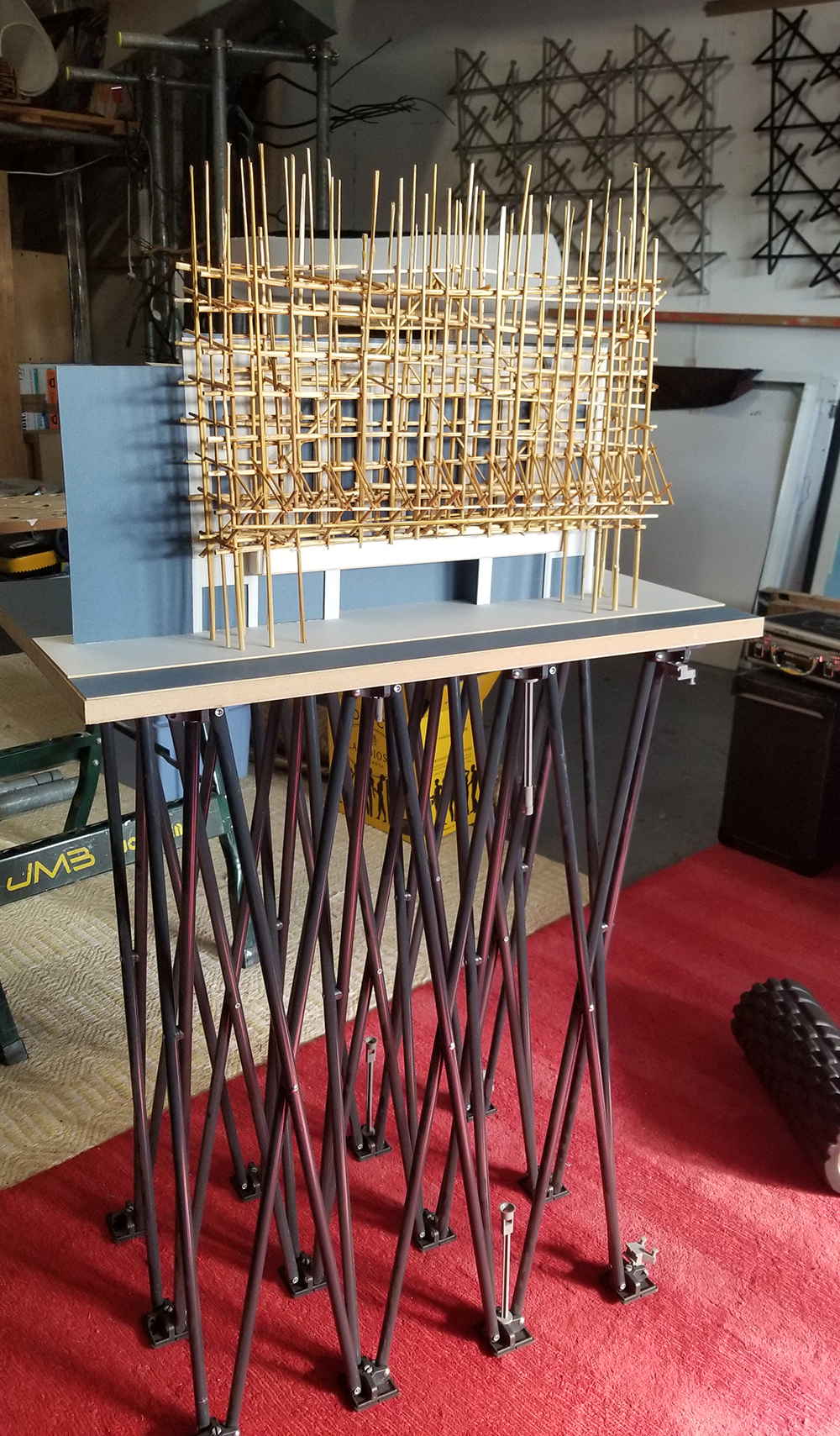Bamboo Support
Dan Shipsides
Public intervention
O'Connel Street, Dublin
September to December 2000
Nissan Art Award 2000
Irish Museum of Modern Art
Bamboo Support - video documentation.
Bamboo Support was a project developed for the Nissan Art Project (and the winning project of the Ire100,000 / €100,000 commission). The project was administered by IMMA - the Irish Museum of Modern Art. The project ran from September to December 2000.
Bamboo Support involved the erection of bamboo scaffolding on the facade of the disused Carlton Cinema building on O’Connell Street in Dublin’s city center. The Carlton Cinema building, was at the time, beginning its’ redevelopment under a major redevelopment scheme for the whole of O’Connell Street.
Whilst the project sets out to be an aesthetic experience Bamboo Support is not a sculpture as such. It aims to integrate art into the public fabric of the city and draw attention to some of the economic and social issues facing Dublin today. It was not publicised as an art project prior to the set up and so the scaffolding structure was encountered, by most, through their normal movements through O’Connell Street without the "economy of the exhibition".
The aim of the project was to intenationalise the experience of seeing Dublin’s then current redevelopment within the context of the country’s "Celtic Tiger" economic boom. Using the difference of the bamboo scaffold presents the fabric and process of urban redevelopment as a cultural process and form. The Asian connection introduced by Nissan’s sponsorship of a major Irish cultural project and further reinforced by the "Celtic Tiger" reference builds on the apparent growth of Dublin’s 'internationalised and "cosmopolitan' situation and also plays on an ethnico-geographic stereotyping of globalising economies. Of course the Chinese or Hong Kong economy is not the same as that of Japan's but the term "Tiger Economy" clumsily lumps the diverse ethnicities and economies of south east Asia together under the frame or drivers of global finance. On occasions, for some members of the public, the project provoked a racist attitude and response associated with the percieved influx of immigrant foreign labor to Ireland (something relatively new to a country previously associated mainly with emigration) whilst to others the project affirmed a positive representation of the contribution of non-Irish to the Irish culture.
Bamboo Support developed a public dynamic in which the art project exposes the economic, social and physical environment in which it sits. The project exists within the public realm on the street using the fabric of the street for its form. It juxtaposed one normal functional form for that of a foreign counterpart and used stealth to introduce its presence. The public was engaged without the economy of the exhibition or an art engendered perspective making the immediacy of the materials crucial to allow meaning to communicate. The project communicated in a natural way and empowered the public to engage in whatever manner and to whatever level they wished and crucially to construe their own understanding.
Architecturally the Carlton Cinema represents a period of high redevelopment in the 1930’s within the context of the recently established Irish Free State, after much of O’Connell Street had been destroyed during the 1916 Rising and the Civil War. Interestingly, in the context of civic and national perception of esteem an earlier period of redevelopment in the 1800’s established O’Connell Street as the widest street in Europe. The current redevelopment of O’Connell Street comes amid another nationally defining period for the Irish Republic as it positions itself within Europe as a major gateway for overseas investment - the consequences have gained the Irish boom economy the misnomer of the “Celtic Tiger”.
The project research, development and realisation took twelve months. It involved lengthy negotiations and extended collaborations with numerous bodies both in Ireland and Honk Kong, China. I made several visits to Hong Kong, initially to research and identify a bamboo scaffolding company able to take on the project and then subsequently to negotiate and finalise logistics. This time was spent following leads, getting advice and meeting several companies throughout Hong Kong, and the New Territories. This research raised a lot of interest from Hong Kong newspapers and on Hong Kong radio. I eventually met with Albert Lai from Ever Need Co. a structural engineering firm based in Shek Kong in the New Territories. After initial discussions a strong working relationship developed. The Ever Need Company enthusiastically took on the project which they saw as a financially viable, exciting project and one with which they could reward their workers with an unusual overseas trip. Several of the workers also enjoyed the opportunity to meet up with their children who were studying in Ireland or the UK.
The bamboo and an eight man work team was imported from Hong Kong to construct the scaffolding structure which entirely covered the facade of the building in the same manner as development sites would have building facades clad in steel scaffolding. To all extensive purposes the structure was functional and the design of the structure was identical to working scaffolding in many countries in Asia (where the use of bamboo scaffolding is common place). The process of construction took ten days and four days to dismantle. These “live” periods were conceived as integral aspects of the project and with the workers moving dramatically in choreographed actions high above the street on poles were in many ways were the most active visual period. In between these times the structure was standing for two months whilst development proceeded on the interior of the building.
The questions raised by the project concern the nature of cultural identities within such corporate global economic and cultural relations. Would the streets of Dublin be redeveloped so rapidly without Ireland’s strategic position within Europe (and European funds) and without its’ consequent global overseas investment? What effects does or will this have on national and local identity….and why are Nissan sponsoring one of the biggest cultural / art awards in Ireland? How society reorientates and adapts within these changing cultural and economic climates is a significant issue that implicates everybody.
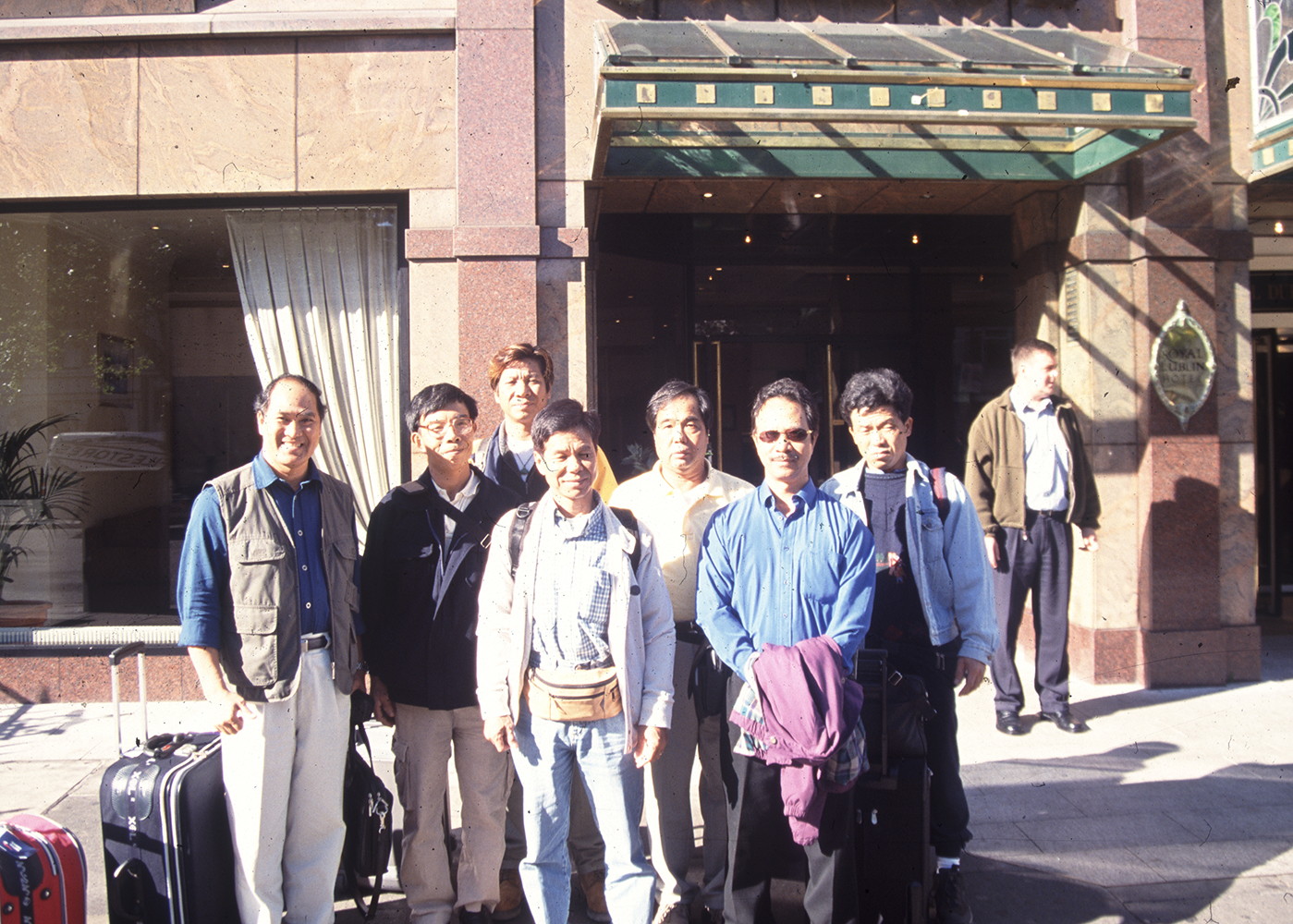
Bamboo Support The scaffold team. Dublin, 2000
I made a working model of this to help with the visualisation and proposal.
Bamboo Support - Model
Card, straw, glue, stand.
140h x 80w x 50d cm.
1999
Dan Shipsides
